Beyond the Trojan Horse – A Visit to Ancient Troy Part 1
After a frenetic day of travel to Canakkale yesterday, we face-planted onto the bed and slept as if we were under the command of Hypnos himself! Today, our intention was to take it easy (not really a word in my vocabulary, but I thought I’d give it a go!). Maybe we’d take a slow amble around Canakkale harbour and possibly a hop across the Dardanelles. We hadn’t planned to visit Ancient Troy until the following day – that was the idea anyway.
In Canakkale, there are plenty of companies offering organised tours. Whilst there are many benefits to having a guide, I have an aversion to being shepherded around in a group and also having to adhere to someone else’s schedule. I’d also read reviews that said little or no time was allocated for the museum, so we wanted to do it independently. After a more than ample breakfast at the Helen Park Hotel, we sought advice from the gentleman at reception. He told us that we could get to the archaeological site by dolmus and gave us directions to the station. He didn’t have access to a timetable, so we’d have to go and find that out ourselves.
After a 10-minute walk, we found the dolmus station under a bridge where Ataturk Caddesi and the Canakkale Stream cross. There was a timetable, and we could see that a bus would be leaving in 30 minutes. Well, as we’re here!
A little cafe with mismatched chairs and tablecloths was conveniently close by. A portly gentleman appeared from a shed-like building carrying a clinking tray of steaming tea glasses. Peter can never get enough tea. As an Egyptian, he has really appreciated the tea-drinking culture in Turkey, so we whiled away the time with a glass or two.
From our table, we could see our dolmus, and as soon as people began to board, we did the same. It filled quickly – a mixture of locals and a handful of tourists. We fell into conversation with an American man travelling on his own. He’d also begun his journey in Istanbul but had come by land via Bursa. From the sound of it, we’d made the right decision to come by sea via Maramara Adasi. The driver took his seat up front, and well-worn Turkish lira notes were passed down the bus in one direction and change sent back in the other. The fare was 100 TL per person per way. At least the public transport here is good value! A few more stragglers boarded. Peter gave up his seat for an elderly lady, and then several stools were pulled out to provide extra seating in the aisle, and off we set.
The dolmus wasn’t the most comfortable means of transport, but it was characterful and authentic. Who needs aircon when you’ve got wind-down windows! Conversations between several elderly Turkish ladies seemed open for anyone to join, including the driver. Out of curiosity, I put on Google Translate to see if I could pick up the essence of their conversation. Parts of their chat talked about individuals they knew, but the main topic seemed to be about the weather. Not just in the UK then! They talked about how the exceptionally dry summer had affected their cherry orchards. One lady at the front spoke with such exasperation and concern at the situation that her anxiety was palpable.
We drove past stone terraces, pine forests and acres of freshly harvested, golden wheat fields that stretched as far as the eye could see. The hills around Çanakkale aren’t shaped by big industrial agriculture, but by a patchwork of small family orchards and olive groves. This network of smallholdings is the defining feature of the rural landscape in this region, and it’s beautiful.
As I was deciphering the conversations, I noticed large swathes of blackened landscape crossing from one side of the highway to the other. Regional reports had indicated that western Turkey had been experiencing one of its driest seasons in decades, with rainfall sharply down and farmland/pasture under pressure. In June and August of this year, the province of Çanakkale was subject to devastating wildfires that had consumed farmland as well as forest zones. The charred landscape covered with blackened stumps was similar to what I’d witnessed on the road to Alexandroupolis in 2023. What hadn’t been consumed by the flames themselves lay scorched and brown and were probably dead from the trauma.
As we approached the Troy National Park, the local ladies called for the driver to drop them off along the way, seemingly in the middle of nowhere. There were just a couple of smallholdings, tiny stone cottages surrounded by acres of agricultural land. The only other vehicles on the road were tractors. The landscape was truly beautiful. Soon, we passed through a large village where I noticed the houses were decorated with paintings of historical figures. This piqued my interest. The lady sitting next to me, as she got up to disembark herself, touched my arm and pointed to the village, indicating that I should visit. Visit we will!
The bus stopped first, close to the entrance of the Troy Museum. We hadn’t decided in which order to do the visit, but by now after shifting seats several times, Peter was at the back of the bus in deep conversation with the other tourists. Just a few minutes later, we were dropped at the entrance to the archaeological site of Ancient Troy. Entry tickets were 27€ per person with headphones and audioguide, an additional 450TL. Why it was listed in the different currencies, I’m not sure. Various museum passes were also sold/accepted, but I’d advise checking on the website beforehand, as there are several different iterations to consider.
https://muze.gov.tr/MuseumPass
The ruins of ancient Troy overlook the entrance to the Dardanelles Strait, just inland from the Aegean Sea — a crossroads of myth, trade, and armies for over 4,000 years. What we’re about to see is real history, most of which is still yet to be fully understood. However, as with most archaeological sites, the stories are also bound up with myth and legend, so let’s explore that first.
Back in the timeless land of the gods, a wedding took place between a mortal hero named Peleus and a shape-shifting sea nymph called Thetis. All of the top gods and goddesses had gathered on Mount Pelion to celebrate. All except one – Eris, the goddess of trouble and strife, purposefully omitted from the wedding list because of her reputation as a disruptor! However, as far as she was concerned, a wedding was the perfect playground for mischief, so she turned up at the wedding anyway. She didn’t shout and scream and cause a stir, nor did she have one too many nectars and make a show of herself. What she did was very subtle and measured, but the repercussions were immense.
Eris simply placed a golden apple into the party amongst the guests. The apple was engraved with three simple words – “For the fairest”. This immediately caught the attention of all the top goddesses, none of which were known for their humility. Hera, Athena and Aphrodite all assumed the apple to be rightfully theirs. Hera, as the wife of Zeus and queen of the gods, thought it was her rightful claim. Athena, the goddess of wisdom and strategy, assumed she was the most qualified. Aphrodite, the goddess of love and beauty, was used to getting anything she wanted and also believed it was meant for her.
An almighty fight broke out – well, you can imagine, can’t you? So bitter and vitriolic was the argument that Zeus had no option but to intervene, though this wasn’t a fight that he wanted to get in the middle of. Instead, he appointed Paris, a young prince of Troy, to decide who the apple should rightfully belong to. And so began the Judgement of Paris, a contest to try and convince him who was most worthy of the golden apple. When I say convince, it was more of a case of bribery.
Each goddess had an offer for Paris. Hera offered him power and said she would make him the king of all Asia. Athena told him that she would bestow upon him military glory and victory in every battle. Aphrodite promised Paris the love of Helen, the most beautiful woman in the world. Paris, being a charming and rather impulsive young man, chose the latter. It’s a shame he didn’t consider his choice more carefully because there was one little snag. Helen was already married to King Menelaus of Sparta. However, that wasn’t going to put a stop to Paris from claiming ‘his’ prize.
There are several schools of thought about what happened next. One version says that Paris weaselled his way into the palace of Menelaus as a guest, and upon seeing Helen, he fell instantly in love with her. (After all, she did have a face that launched a thousand ships!) One version says that he abducted her against her will, and another that the attraction was mutual and she went off with him of her own free will. Her marriage to Menelaus was part of a political pact rather than a marriage borne from love. Ancient writers like Sappho and Euripides wrote that Aphrodite had used a little magical intervention and used her powers to make them fall in love.
There are many interpretations of this story and how Helen ended up in Troy (if indeed she did), but the consensus is that it resulted in the famous Trojan War that lasted for 10 years. On the side of the Trojans were Paris, Hector, Aeneas and King Priam and on the side of the alliance of the Greek City States was Menelaus, his powerful brother Agamemnon, Odysseus and Ajax, plus many other characters of myth and legend. The top gods were equally divided, all taking the side of one or the other, so you can imagine the complexity of this story.
The Greeks besieged Troy for 10 years, and eventually, victory was within their sights. One last step and they’d be in, but they failed to breach the city walls. Odysseus was attributed with the idea of creating the legendary Trojan Horse, which was carefully crafted by Epeius, a Greek soldier renowned for his engineering and craftsmanship. The rest is – well, not history because this is the myth shrunk down into as much of a nutshell as I could manage. Homer’s poem The Iliad covers just 1 year of the war, which puts the proportions of this epic story into context.
So, what about factual history, and what can we expect to see here at the archaeological site? The site is located in the area known today as Hisarlik and has only been partially excavated. Excavations to date have identified 9 major layers dating from 3000-500 BC built on top of each other. Because of its strategic position close to the Aegean Sea and the Dardanelles, the site was reoccupied time after time. The walls of the earlier houses were built from sundried mudbrick, and when a new phase of building began, the houses were levelled and the new ones constructed on top. This, over time, created an artificial mound nearly 20 metres high. Just imagine all the archaeology below.
Archaeologists have identified broad chronological layers. The lower 7 settlements known as Troy I-VII (3000-1180 BC) contain the remains of 41 building phases. On top of these are the Greek and Hellenistic Troy (from 700 BC) and then the Roman phases (from 85 BC). If we want to superimpose Homer into the mix to give a bit of context, the era referred to in the Iliad was the late Bronze Age, 1250–1180 BC. He is said to have penned the Iliad around 750-700 BC. I won’t begin a debate on whether Homer was a single human as personified in bearded marble or an amalgamation of oral storytellers through the ages. For now, let’s assume it’s the former, since the archaeology supports the theory that Ancient Troy is the same city called Ilion that Homer wrote about.
Archaeologists identified the existence of a large citadel surrounded by fortified walls, with a two-storey palace within. This was home to the rich and powerful, and it developed into a significant trading centre. Beyond this was the lower citadel, surrounded by a fortified ditch. This was home to the peasant workers who farmed wheat and corn on the expansive agricultural plains that spread out towards the sea.
Once you enter the site, you miss the large Trojan horse standing just beyond the entrance. There is no archaeological evidence that a Trojan horse was instrumental in the Trojan War or even ever existed. However, through myth and legend, it has become the most recognisable emblem in this part of Turkey.
This structure was commissioned by the Turkish Ministry of Culture and Tourism. The one by Canakkale harbour was part of the film set of the film Troy and was later gifted to the town.
We begin our explorations by following a wooden-railed boardwalk in a clockwise direction. We realised later that we’d done this back to front, but even with the audioguide, we managed to make it work, starting at the South Gate and Odeon. The South Gate was just one of four gates into the city of Troy, which connected the city to the surrounding farmland. It may have served as a secondary entrance for traders and travellers. Within a couple of metres, we move from the Trojan archaeology to the Roman. The Roman Odeon is dated 1-3 centuries AD. One minute you’re walking through the Bronze Age and next the Roman – it’s fascinating!
The Odeon was where theatre, lectures and public meetings took place. It played an important part in everyday Roman life along with the nearby Agora and Baths. The stage building attached to the Odeon was once home to an oversized statue of Hadrian to commemorate his visit to Troy in 129-130 AD. The statue is now in the Istanbul Archaeological Museum.
Next, we come to the Sanctuary perched on the acropolis of the citadel, a place of enduring spiritual and cultural significance. Troy’s sacred precinct was founded as early as the 8th Century BC and consisted of a blend of shrines, altars and open-air worship areas that evolved over centuries. Visitors to the sanctuary would have witnessed ritual sacrifices and votive offerings. Excavations have found terracotta figures of Cybele and a horseman believed to be a representation of the Trojan hero Daranos. It gives some indication of the cults that practised there.
Continuing around, we passed by the City Gate and the Ramp. The main gate complex on the western side of the citadel was the principal entrance and was built with massive stone blocks. It is said to have been a sophisticated entry system. The Ramp was a sloping passage leading up to the citadel, providing access from the lower town or plain to the fortified upper city.
The next point of interest isn’t visually impactful (apart from the view across the plain to the coast), but it is significant, if not also a little controversial. Heinrich Schliemann was a German businessman and amateur archaeologist. He had been inspired by Homer’s Iliad and had a hunch that this part of Northwest Turkey was the Troy that Homer described.
In the summer of 1871, Schliemann arrived at the mound of Hisarlik with a team of local labourers. He began digging trenches across the ancient mound, though, driven more by the promise of Homeric treasure than by carefully considered excavation. Unbelievably, he used gunpowder to blast through the upper layers, sending debris and possibly archaeological artefacts into the air. In 1873, Schliemann claimed to have uncovered the fabled Priam’s treasure, a dazzling hoard of gold and jewellery, which he smuggled out of the Ottoman Empire. It was later confirmed that it was not Priam’s treasure.
Although he is purported to have placed Troy on the map of historical exploration, his methods were destructive and still today make the toes of archaeologists curl! What his carelessness did do, however, was create a clear view from the citadel down to the sea, where you can appreciate the importance of Troy as a trading centre.
I’ll speak more of Heinrich Schliemann when I eventually get around to writing about my visit to his former home – now the Numismatic Museum of Athens.
Close to Schliemann’s Trench is an excavated area that has identified layers from Troy II all the way to Troy IX. These excavations were begun by Schliemann and further continued by archaeologists Dorpfeld (1893) and Korfmann (1990-96). Here you can see that the earlier settlements were built directly on top of the bedrock, and then subsequent towns were built on top of each other.
The route takes us past more fortified walls and then to the Megaron, a central hall of a palace or grand house during ancient Greek and Mycenaean times, a forerunner to the Greek temple plan. It’s constructed of mud brick walls built on a stone foundation and is preserved to a height of 1.5 metres. This Megaron had a large central hearth, plastered walls and whitewashed floors that had once been covered in reed mats. This particular Megaron had been destroyed by fire, but analysis of the charred remains of grain dates its last usage from 2290-2220 BC. Archaeological finds indicate some level of cult activity.
Just behind the Megaron is the reconstructed Citadel Wall, re-created to protect and help preserve the Megaron.
Not much remains of the Temple of Athena except the foundations and stone blocks that indicate a classical-style temple, likely from the Hellenistic or early Roman period. There are also the remains of a temple pillar and part of a coffered roof with intricate stone carvings.
In 334 BCE, Alexander the Great visited the ancient city of Troy at the start of his campaign into Asia. Ancient sources reported that he paid homage at the citadel’s sacred precincts, offering sacrifices to the city’s legendary heroes and to Athena, the goddess of wisdom and war. While the precise details of his visit to the Temple of Athena are unclear, it reflects Troy’s continuing religious and symbolic importance even in the Hellenistic period.
It is also believed that Alexander the Great’s father, Philip II of Macedonia, had considered Troy a site for his new city, but this was never realised, and he built it in Macedonia (Philippi) instead. Other settlers at Ancient Troy are a colony of red squirrels who look perfectly at home here!
The final section of the walkway (which technically should have been where we began) takes us past the East Wall and Gate. Here are the remains of the outer wall of the Greek and Roman temple precinct. These Cyclopean walls are impressive. Built onto the walls are the remains of houses. Other settlements had been destroyed by earthquakes and/or fire. Behind lies the lower town of Greek and Roman Ilion.
The stone foundations of the wall were up to 6-8 metres thick, built with a double-wall structure of flexible mud bricks. Sections of the wall were built to slope outwards at the base, rendering battering rams less effective. Choke points were also part of the clever design. The entrances were deliberately narrow, which slowed down the onslaught of the attackers. This gave the defenders plenty of time to attack them from the towers and bastions above. An interesting point to end our visit on.
Before leaving, we took one last look around to try and absorb everything we’d just seen. The landscape beyond the East Gate, leads to the Dardanelles in the north, and to the west, the plain of ancient Scamander stretches out in front of us. In the far distance rise the Ida Mountains, while out at sea sits the island of Bozcaada, once known as Tenedos.
I will admit that the archaeological site of Ancient Troy wasn’t as immediately striking as I’d imagined it, yet there was a quiet magic there. Beyond marvelling at the diligence of the archaeologists (with one notable exception), Troy had invited us to imagine a world woven from both myth and reality, and to glimpse how people lived, struggled, and sought power in ancient times. Cities rose and fell, nature reshaped the land, and human ambition and survival played out in countless battles. All of this unfolds against a landscape of extraordinary beauty—a verdant plain that once bore witness to bloodshed, yet now feels almost timeless.
In Part 2, the Troy Museum and the Tevfikiye Archeo-Village Project.

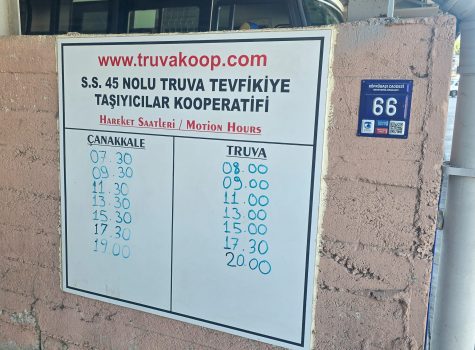
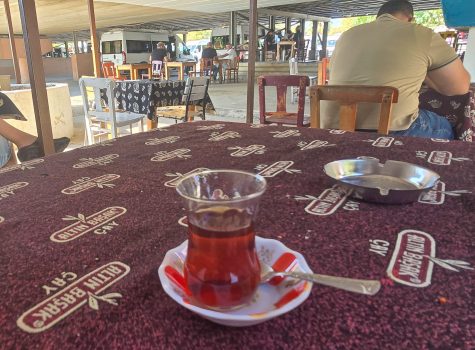
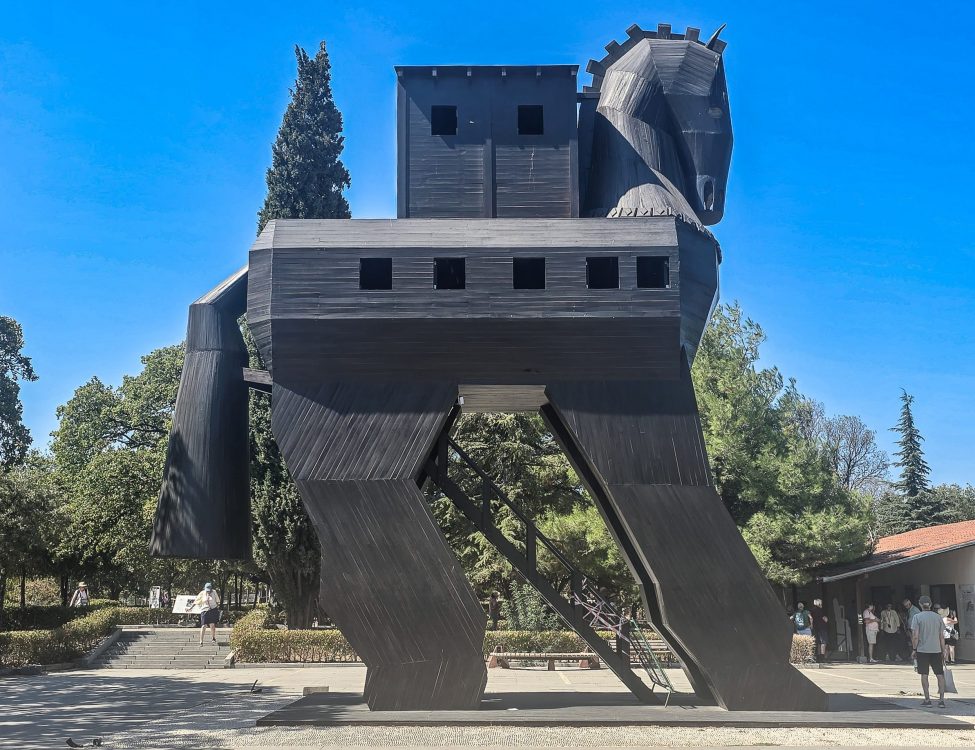
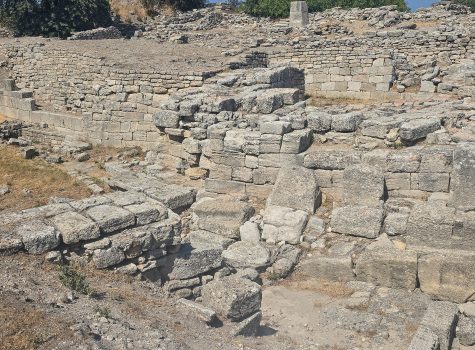
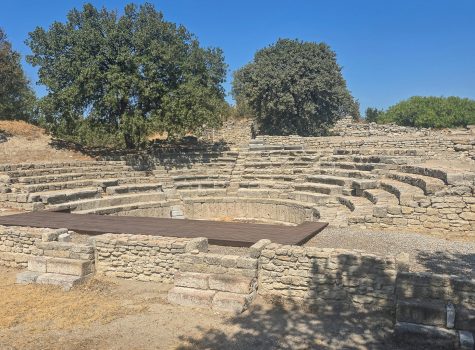
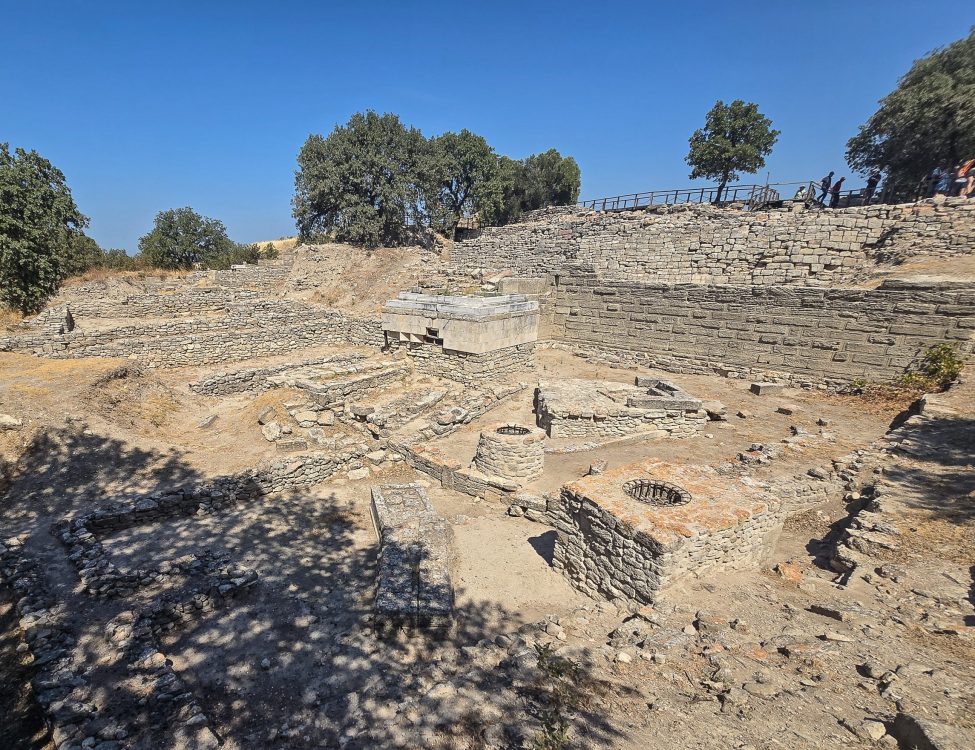
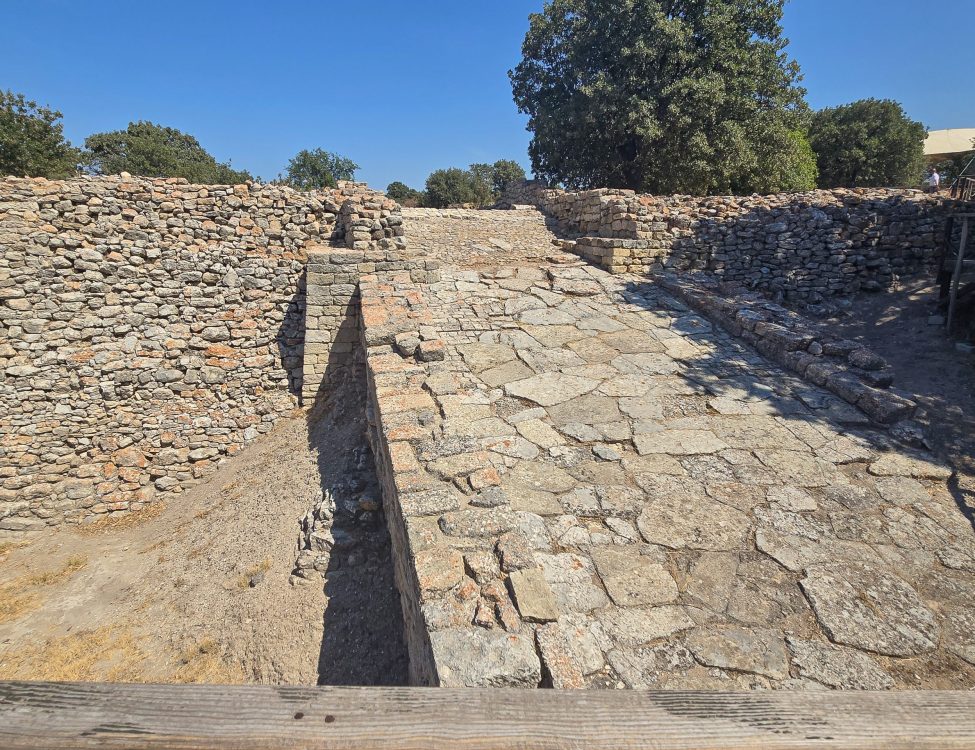
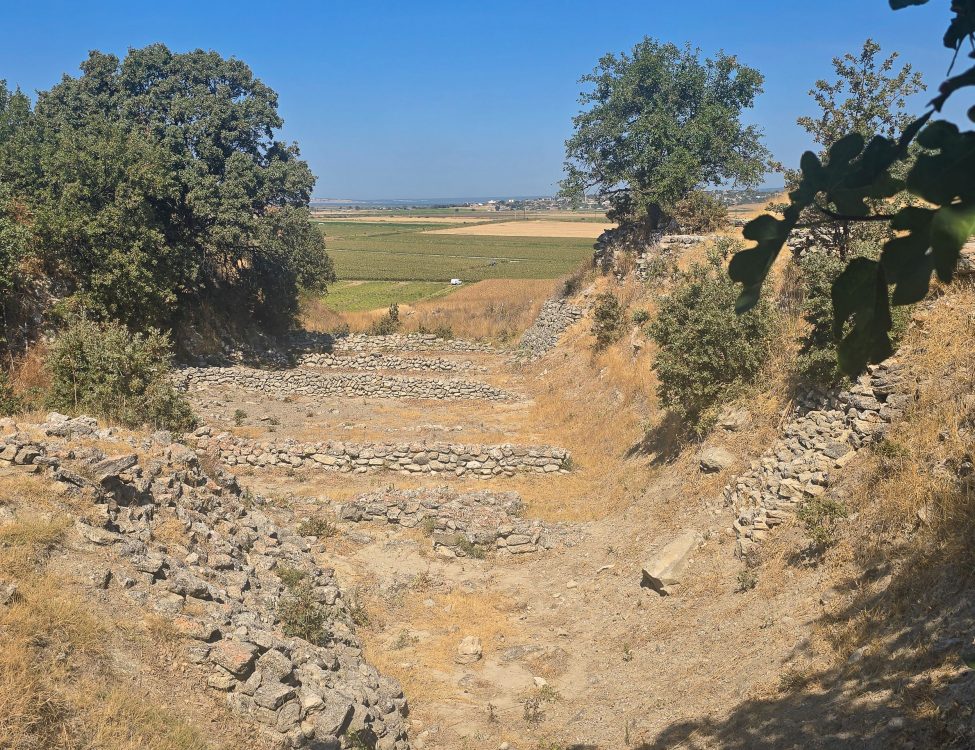
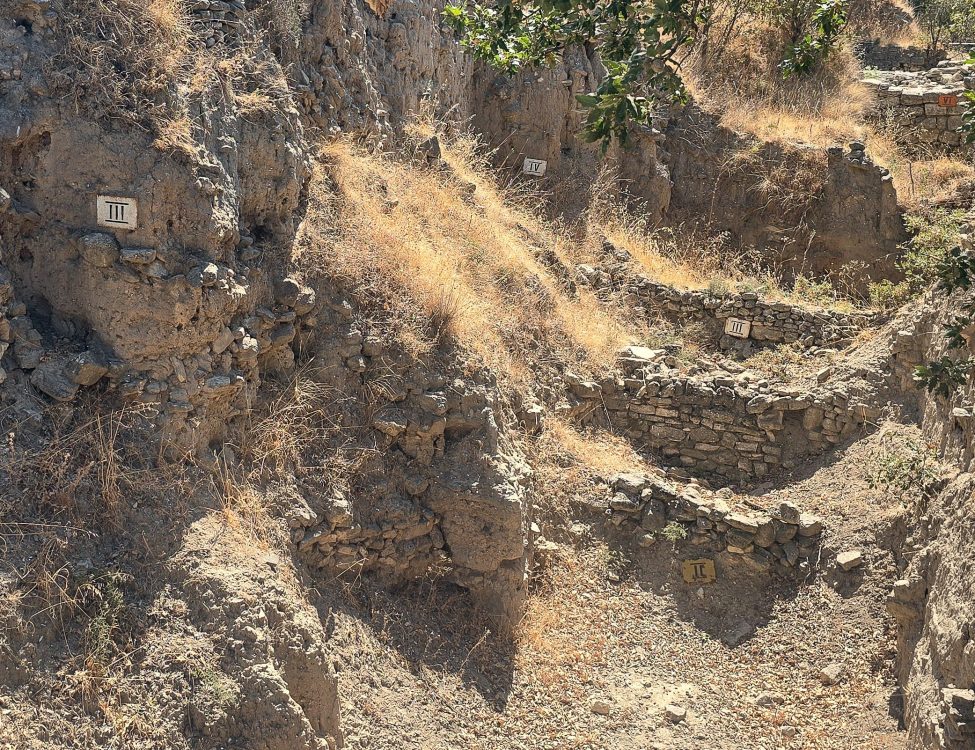

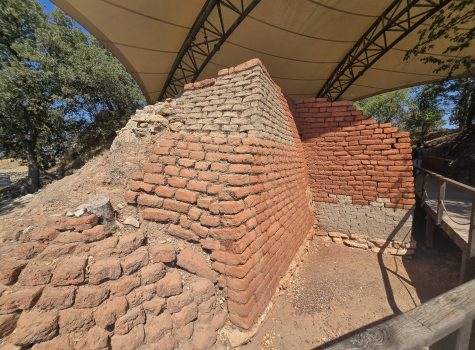
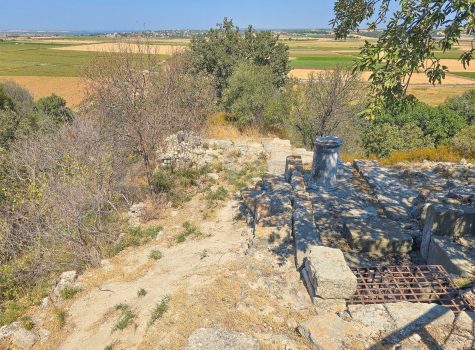
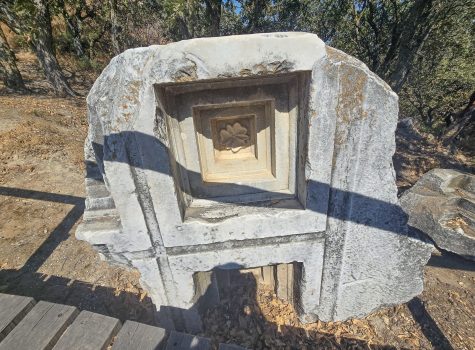









Very interesting writing Stephanie – I have learnt some more history today! X
It’s funny how I find history so interesting now but had no interest in it at school. I think the way we were taught it at that time was terrible. ❤️